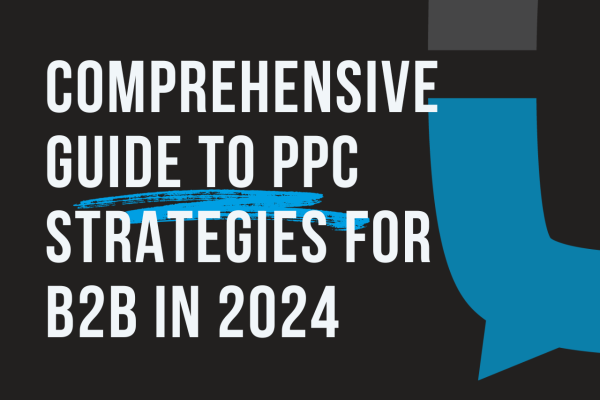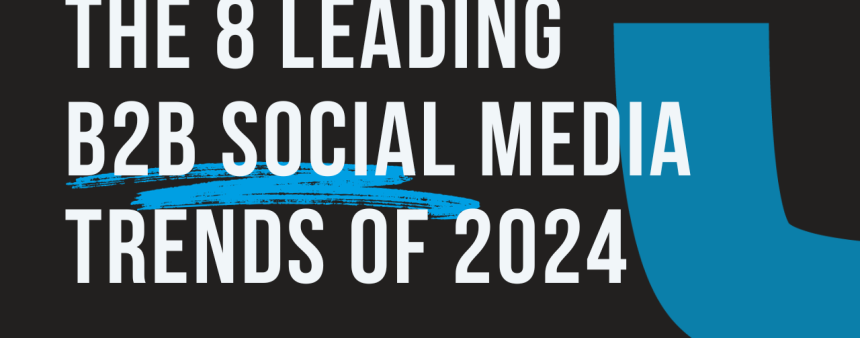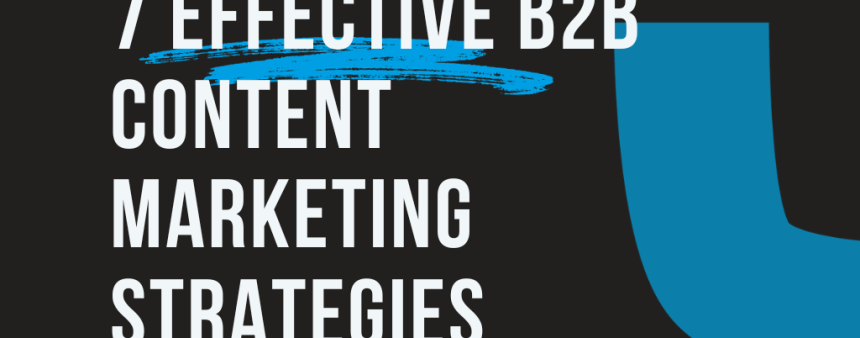
B2B (Business-to-Business) marketing has its unique challenges, and when it comes to PPC (Pay-Per-Click) strategies, it’s crucial to understand the nuances to drive meaningful results. This guide delves deep into the most asked questions about PPC strategies for B2B
and provides in-depth answers to help businesses optimize their campaigns for maximum ROI.
1. Why is PPC crucial for B2B marketing in the digital age?
PPC advertising has become an indispensable tool for B2B marketers. With the increasing digitalization of business processes and decision-making, companies are constantly looking for solutions online. PPC campaigns allow businesses to position themselves right where their potential clients are searching.
- Immediate Visibility: Unlike organic SEO strategies, which can take months to show results, PPC campaigns offer immediate visibility on search engines.
- Targeted Approach: PPC allows businesses to target specific keywords, demographics, and even devices, ensuring that the ads are seen by the most relevant audience.
- Measurable ROI: Every aspect of a PPC campaign, from clicks to conversions, can be tracked, allowing businesses to measure their ROI accurately.
- Flexibility: PPC campaigns can be tweaked in real-time based on performance data, ensuring optimal results.
- Brand Awareness: Even if users don’t click on the ad, a well-placed PPC ad can boost brand awareness.
2. How can B2B businesses optimize their ad copy for better conversions?
Crafting compelling ad copy is an art. For B2B businesses, the challenge is to convey complex solutions in a concise manner that resonates with the target audience.
- Understand Your Audience: Know the pain points and needs of your target audience. Tailor your ad copy to address those specific needs.
- Clear Value Proposition: Clearly state what makes your product or service unique. Why should businesses choose you over competitors?
- Include Numbers: Statistics, percentages, and numbers can make your ad copy more compelling and credible.
- Strong Call-to-Action (CTA): Guide the users on what they should do next. Whether it’s “Learn More,” “Get a Quote,” or “Sign Up,” make sure your CTA is clear and compelling.
- Use Emotional Triggers: B2B decisions, while logical, are also influenced by emotions. Use emotional triggers like “peace of mind,” “success,” or “growth” to connect with your audience.
- Test and Optimize: Regularly A/B test your ad copies to find out what resonates best with your audience. Based on the results, continuously optimize your copy for better conversions.
3. What role does landing page optimization play in B2B PPC campaigns?
The landing page is where the conversion happens. Even if you have the most compelling ad copy, a poorly optimized landing page can deter potential clients.
- Relevance: Ensure that the content on the landing page is directly relevant to the ad copy. If your ad talks about a specific product feature, the landing page should highlight that feature prominently.
- Clear CTA: Just like in your ad copy, the landing page should have a clear and compelling CTA.
- Fast Loading Times: Slow loading pages can increase bounce rates. Optimize images, scripts, and use a reliable hosting provider to ensure fast loading times.
- Mobile Optimization: With an increasing number of users accessing content on mobile devices, ensure that your landing page is mobile-optimized.
- Trust Signals: Include testimonials, case studies, and certifications to build trust with potential clients.
- Simplify Forms: If your landing page has a form, keep it simple. Ask only for the most essential information to increase conversion rates.
For a comprehensive guide on landing page optimization, consider exploring resources like Backlinko’s in-depth guides.
4. How can B2B businesses leverage remarketing in their PPC campaigns?
Remarketing, or retargeting, is a powerful tool that allows businesses to show ads to users who have previously interacted with their website but did not convert.
- Segment Your Audience: Not all visitors are the same. Segment your audience based on their interaction with your site. For instance, you can have separate remarketing campaigns for users who visited your pricing page and those who read a blog post.
- Tailored Ad Copy: Create ad copies tailored to each segment. For users who visited the pricing page, your ad copy could offer a special discount.
- Frequency Capping: Ensure that you’re not bombarding users with your ads. Set a limit on how often a user sees your ad in a given time frame.
- Leverage Different Platforms: Apart from Google Ads, platforms like LinkedIn and Facebook also offer remarketing options, which can be especially powerful for B2B businesses.
- Monitor and Optimize: Regularly monitor the performance of your remarketing campaigns. Adjust your strategies based on what’s working and what’s not.
For more advanced strategies on remarketing, consider diving into specialized resources and courses.
5. How can businesses set a budget for their B2B PPC campaigns?
Setting a budget for PPC campaigns is crucial to ensure a positive ROI.
- Understand Your Sales Funnel: Know the average conversion rate at each stage of your sales funnel. This will help you determine how many clicks you need to generate a sale.
- Determine the Average Cost-Per-Click (CPC): Research the average CPC for your target keywords. Tools like Google’s Keyword Planner can be helpful.
- Set a Target Cost-Per-Acquisition (CPA): Based on your average sale value and the profit margin, determine how much you’re willing to spend to acquire a customer.
- Calculate the Initial Budget: Based on the target CPA and the average CPC, calculate the initial budget. For instance, if your target CPA is $100 and the average CPC is $2, you’d need 50 clicks to get a conversion. So, your initial budget should be $100 (50 clicks x $2 CPC).
- Monitor and Adjust: Regularly monitor the performance of your campaigns. If you’re consistently achieving a lower CPA than your target, you can consider increasing your budget.
Budgeting for PPC campaigns requires a mix of research, calculations, and continuous optimization.
6. How can B2B businesses use negative keywords to improve their PPC campaigns?
Negative keywords are terms that you don’t want your ads to show up for. By using negative keywords, businesses can ensure that their ads are only displayed for the most relevant queries.
- Avoid Irrelevant Clicks: By excluding irrelevant terms, you can ensure that you’re not paying for clicks that are unlikely to convert.
- Increase Quality Score: Google’s Quality Score takes into account the relevance of your ads. By using negative keywords, you can improve the relevance of your ads, leading to a higher Quality Score.
- Research Regularly: Regularly research and update your negative keyword list. Tools like Google’s Search Terms Report can show you what terms are triggering your ads.
- Use Broad, Phrase, and Exact Match: Just like regular keywords, negative keywords can be set to broad, phrase, or exact match. Use the appropriate match type based on your needs.
- Consider Competitor Names: If you don’t want your ads to show up for searches related to your competitors, add their names to your negative keyword list.
Using negative keywords effectively can significantly improve the performance of your PPC campaigns.
7. How can B2B businesses measure the success of their PPC campaigns?
Measuring the success of PPC campaigns is crucial to ensure a positive ROI and to make data-driven decisions.
- Click-Through Rate (CTR): CTR is the ratio of users who click on your ad to the number of total users who see the ad. A higher CTR indicates a more relevant ad copy.
- Conversion Rate: This is the ratio of users who take a desired action (like signing up or making a purchase) after clicking on your ad.
- Cost-Per-Conversion: This metric tells you how much you’re spending to acquire a customer. It’s crucial to ensure that the cost-per-conversion is lower than the profit you make from a sale.
- Quality Score: As mentioned earlier, Google’s Quality Score takes into account the relevance of your ads. A higher Quality Score can lead to lower costs and better ad positions.
- Ad Position: This tells you where your ad appears on the search results page. While being in the top position can be beneficial, it’s also more expensive. It’s crucial to find a balance between ad position and cost.
- Return on Ad Spend (ROAS): This metric tells you how much revenue you’re generating for every dollar spent on ads. A ROAS of 3, for instance, means you’re making $3 for every $1 spent on ads.
Regularly monitoring these metrics can help businesses optimize their campaigns for better results.
8. How can B2B businesses leverage long-tail keywords in their PPC campaigns?
Long-tail keywords are longer, more specific keyword phrases that visitors are more likely to use when they’re closer to making a purchase or when they’re using voice search.
- Higher Conversion Rates: Since long-tail keywords are more specific, they tend to have higher conversion rates compared to broader keywords.
- Less Competition: Long-tail keywords generally have less competition, leading to lower costs.
- Better Targeting: By targeting specific long-tail keywords, businesses can ensure that their ads are displayed to the most relevant audience.
- Voice Search Optimization: With the increasing use of voice assistants like Siri and Alexa, optimizing for long-tail keywords can also help businesses tap into voice search traffic.
- Content Ideas: Long-tail keywords can also provide content ideas. For instance, if a long-tail keyword is a question, businesses can create content that answers that question.
Leveraging long-tail keywords can be a powerful strategy for B2B businesses looking to optimize their PPC campaigns.
9. How can B2B businesses use ad extensions to enhance their PPC ads?
Ad extensions provide additional information and can significantly enhance the visibility and performance of your PPC ads.
- Sitelink Extensions: These allow businesses to add additional links to their ads. For instance, apart from the main landing page, businesses can also link to their product pages, blog, or contact page.
- Call Extensions: Allow users to call your business directly from the ad.
- Location Extensions: Show your business address, phone number, and a map marker with your ad.
- Structured Snippet Extensions: Highlight specific aspects of your products or services. For instance, if you’re selling software, you can highlight features like “24/7 Support,” “Cloud-Based,” or “Intuitive UI.”
- Price Extensions: Display your products or services along with their prices.
Using ad extensions effectively can significantly enhance the performance of your PPC ads.
10. How can B2B businesses use audience targeting to improve their PPC campaigns?
Audience targeting allows businesses to display their ads to specific groups of people based on criteria like demographics, interests, and behavior.
- Demographic Targeting: Target users based on criteria like age, gender, income level, and education.
- Interest-Based Targeting: Display your ads to users based on their interests. For instance, if you’re selling accounting software, you can target users interested in finance and accounting.
- Behavioral Targeting: Target users based on their online behavior. For instance, you can target users who have visited your site but did not make a purchase.
- Remarketing Lists: As mentioned earlier, remarketing allows businesses to target users who have previously interacted with their site.
- Similar Audiences: Google Ads allows businesses to target users who are similar to their existing customers.
Using audience targeting effectively can help businesses ensure that their ads are displayed to the most relevant audience, leading to higher conversion rates.
Table Summary
| Key Aspect | Description |
|---|---|
| PPC Importance | Immediate visibility, targeted approach, measurable ROI, flexibility, and brand awareness. |
| Ad Copy Optimization | Understand audience, clear value proposition, include numbers, strong CTA, and emotional triggers. |
| Landing Page | Relevance, clear CTA, fast loading times, mobile optimization, trust signals, and simplified forms. |
| Remarketing | Segment audience, tailored ad copy, frequency capping, leverage different platforms, and monitor and optimize. |
| Budgeting | Understand sales funnel, determine average CPC, set target CPA, calculate initial budget, and monitor and adjust. |
| Negative Keywords | Avoid irrelevant clicks, increase Quality Score, research regularly, use match types, and consider competitor names. |
| Success Metrics | CTR, conversion rate, cost-per-conversion, Quality Score, ad position, and ROAS. |
| Long-Tail Keywords | Higher conversion rates, less competition, better targeting, voice search optimization, and content ideas. |
| Ad Extensions | Sitelink extensions, call extensions, location extensions, structured snippet extensions, and price extensions. |
| Audience Targeting | Demographic targeting, interest-based targeting, behavioral targeting, remarketing lists, and similar audiences. |
FAQ
How does PPC differ for B2B compared to B2C?
B2B PPC campaigns often target a smaller, more niche audience and focus on longer sales cycles. The keywords might be more industry-specific, and the ad copy needs to address specific business needs and challenges.
Is PPC effective for all B2B industries?
While PPC can be effective for most B2B industries, its success depends on factors like keyword selection, ad copy, landing page optimization, and the overall marketing strategy.
How often should I review and optimize my B2B PPC campaigns?
Regular monitoring is crucial. Ideally, you should review your campaigns weekly and make adjustments based on performance data.
Can I target specific companies or job titles in my B2B PPC campaigns?
Platforms like LinkedIn allow for very specific targeting based on company names and job titles, making it a valuable platform for B2B PPC campaigns.
How do I ensure that my PPC budget is being spent effectively?
Regularly monitor metrics like CPC, CTR, conversion rate, and ROAS. Adjust your strategies based on what’s working and what’s not.
What role does content marketing play in B2B PPC campaigns?
Content marketing and PPC go hand in hand. Quality content can improve Quality Scores, reduce CPC, and increase conversions. Moreover, PPC can drive traffic to your content, amplifying its reach.
Are there any tools that can help optimize B2B PPC campaigns?
Yes, tools like Google’s Keyword Planner, SEMrush, and Ahrefs can provide valuable insights and help optimize your campaigns.



